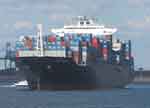Overview
Essential Purpose
The countries of the earth are connected by the products they trade. For example, few bananas are grown in the United States. However, bananas are a fruit consumed in large quantities by people in the United States. They have bananas on cereal, toast, in milkshakes, as dried trail mix, and many other ways. The appetite of the United States for bananas is dependent on trade with the banana producing countries of the world. The list of trade items is long, including tennis shoes, food, computers, cars, and airplanes. Trade is an important and enduring human system that results in the exchange of goods, services, and ideas.
This module will provide an opportunity for students to understand and be able to explain why trade occurs between groups of people and between regions of the world. Trade has been the cause for many of the major changes in the world. It is part of the human system of using the environment to produce goods and exchanging the goods with other groups of people. People in some places and regions are able to produce goods that cannot be produced easily or economically in other places and regions. As a result, if there is a demand for those products in other places, trade will ensue.
National Geography Standards
NATIONAL GEOGRAPHY STANDARD 11: The Patterns and Networks of Economic Interdependence on Earth's SurfaceELEMENTARY: Locate and classify economic activities; identify that people, products, and ideas move from place to place
State/Local Standards
States should align these modules to their own state/local standards as appropriate.
Essential Questions
- Why is trade important to a country's economy?
- How does global trade influence the lives of people?
Essential Content
Resources and the means for production are not evenly distributed on Earth.- Location
- Distribution
- Products
- Imports
- Exports
- Products
- Transportation
- Economic interdependence
Essential Skills
Asking Geographic Questions- Why are some things produced in some countries, but consumed in other countries? (examples are fruits, tennis shoes, cars, clothing, etc.)
- Locate and record information from maps and by surveying the locations where imported products are made or grown.
- Construct tables and maps that show locations where things are produced and where they are consumed.
- Use tables and maps to explain why products move from one location to other locations on Earth.
- Present geographic information that answers the question: Why does the United States (or our state) trade with other countries?
Summative Assessment
This performance assessment should be reviewed with students prior to using the activities in the module. Students should do the assessment after the activities have been completed.Essential Questions Addressed by the Summative Assessment:
- Why is trade important to a nation's economy?
- How does global trade influence the lives of people?
| Prior Knowledge
Problem
Role/Perspective
Product
Criteria
for an Exemplary Response |
Now that you have learned about how and why trade occurs, you are ready to think about how global trade affects people. The editor of a magazine that writes articles on food was having breakfast in the dining room of a city hotel. He started to look at the labels of the food being served for breakfast. He found that the foods came from many different places. For example, marmalade was made from oranges in Spain, orange juice came from China, kiwi fruit from California, pineapple from Hawaii, toast from wheat grown in Kansas, butter from Wisconsin, milk from Illinois, sugar from Jamaica, pepper from Indonesia, salt from Michigan, potatoes from North Dakota, eggs from Indiana, coffee from Brazil, tea from India, and hot chocolate (chocolate beans) from Mexico. He could see that People in the United States and in many other countries rely on global trade to provide many of the goods that people need and want. They also use global trade to sell the products they make. You are a freelance writer and have written many articles for other magazines about global trade. The editor calls you and asks you to write an article that connects global trade to what he is having for breakfast. He wants you to show people how food gets to the breakfast table. Write an article for the food magazine that connects global trade to the choices that people make when they have breakfast in a hotel. In your article be sure you:
|

 Module Menu
Module Menu Printable View
Printable View

 Scoring Guide
Scoring Guide